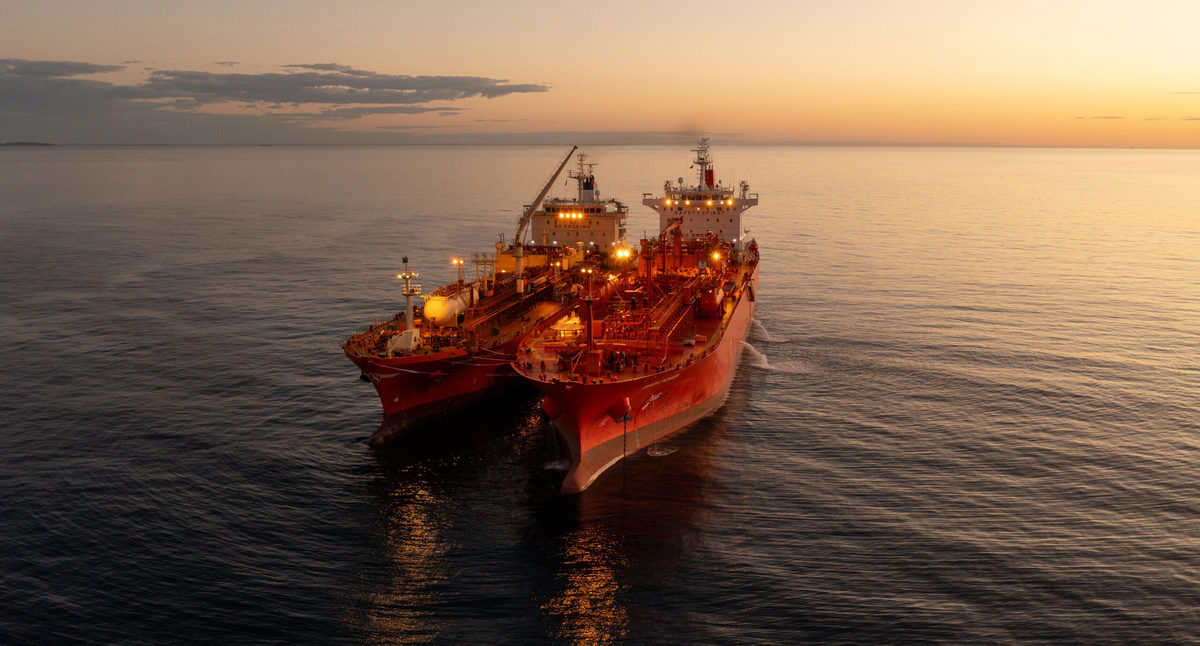Successful ammonia pilot proves ship-to-ship transfers are safe - GCMD
The Global Centre for Maritime Decarbonisation (GCMD) has stated that the successful ammonia transfer pilot in Australia proves ship-to-ship transfers of liquid ammonia can be safely carried out at sea.
 IMAGE: STS ammonia transfer between Navigator Global and the Green Pioneer at the outer anchorage of Port Dampier. Yara Clean Ammonia
IMAGE: STS ammonia transfer between Navigator Global and the Green Pioneer at the outer anchorage of Port Dampier. Yara Clean Ammonia
The trial took place in September last year at Western Anchorage WA19, about 20 nautical miles off Port Dampier in Western Australia. It involved the transfer of 2,700 mt of liquid ammonia between two gas carriers—the Green Pioneer, owned by MOL, and the Navigator Global, operated by UK-based Navigator Gas.
The site was chosen for its ammonia-handling infrastructure, large anchorage, and safe offshore location. The pilot simulated real bunkering conditions and included extensive technical, safety, and regulatory assessments.
GCMD’s report confirms that such transfers can be carried out safely at anchorage if appropriate safety measures are followed.
Four key safety areas—feasibility, risks, consequences, and emergency response—were studied in detail. Analyses showed that ammonia transfers could safely take place in weather conditions up to 20-knot winds and 0.3-metre swell. Simulated leak scenarios showed that even a large release would stay within safe limits in the anchorage zone.
Risk assessments identified 23 moderate risks specific to ammonia transfers, all of which were effectively managed using controls like avoiding simultaneous operations (SIMOPS) and having an incident response vessel on standby.
Crews also carried out ammonia-specific emergency drills, while firefighting equipment, communication protocols, and personal protective gear were in place.
The report highlights that this pilot sets a strong foundation for future ammonia bunkering operations.
With ammonia propulsion systems advancing and the IMO’s global emissions pricing framework coming into effect in 2025, GCMD says ammonia is well-positioned as a zero-carbon marine fuel.
By Tuhin Roy
Please get in touch with comments or additional info to news@engine.online





